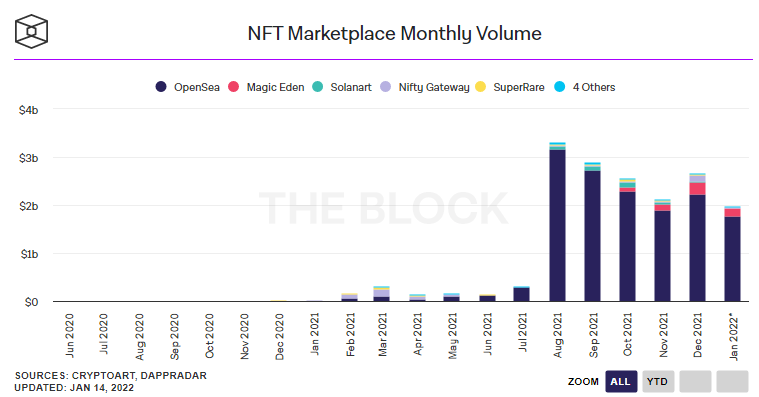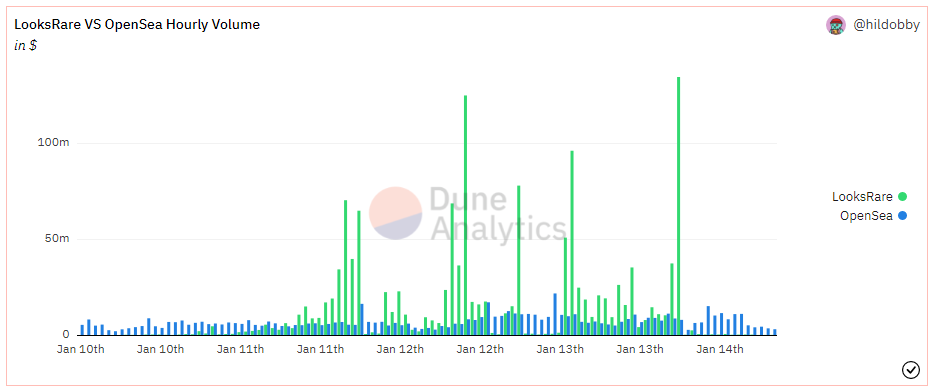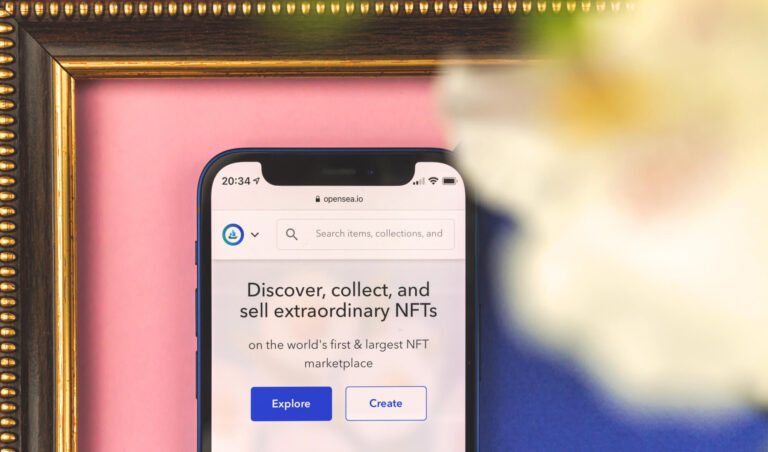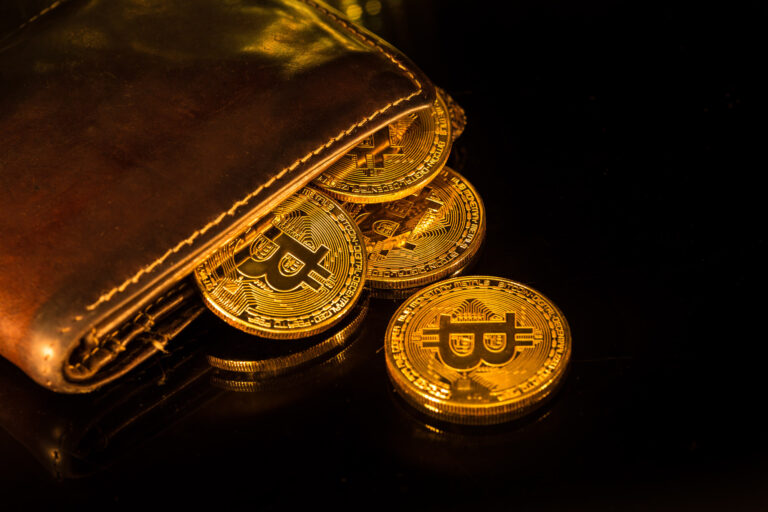In 2017, non-fungible tokens (NFTs) first came to the public's attention through the project CryptoKitties. Intrigued by the technology and as a response to the lack of marketplaces, OpenSea was founded that same year. 4 years later, the industry is looking for alternatives its the monopoly.
OpenSea calls itself the world's first and largest NFT marketplace. You could think of the platform as eBay for digital objects and collectibles. The peer-to-peer marketplace benefited from the remarkable rise of NFTs, especially in 2021. During the past four months, OpenSea recorded nearly $3 billion in monthly trading volume. However, criticism of the company's centralized structure is resonating with more and more users.
Turmoil after a successful year
Although various marketplaces now exist and have benefited from the growing interest in NFTs, OpenSea was the big winner of the boom in 2021, with the platform recording trading volumes of around $14 billion at the end of the year. Despite its success, however, OpenSea has also come under criticism from the NFT community for several reasons.

In September, a major PR faux pas occurred when the product manager at the time was caught insider trading. He used confidential information to buy specific NFTs just before a home page listing and sell them in the ensuing rush. Then, in early December, there was a heated reaction when the company's new chief financial officer, Brian Roberts, hinted that the company was considering an IPO. Since its last funding round, the company is valued at $13.3 billion.
Web2 structure meets Web 3.0
At the heart of the emerging Web 3.0 is ownership. The vision of the next phase of the Internet is a place where people can tokenize their intellectual property and own their creations. This includes ownership of platforms on which their creations are based. Data monopolies like Facebook and Twitter would become less important, while more power would be returned to users. Thus, many protocols have begun to decentralize their business through airdrops while attaching governance processes to tokens. Like this, users can influence the future of their favorite protocols and participate in their success by holding those tokens.
OpenSea's model contradicts some of the principles on which this Web 3.0 infrastructure is built. While the marketplace allows blockchain tokens in the form of NFTs to be traded more or less freely, the company's decision-making is centrally managed. Likewise, the 2.5% fees on each trade through the platform flow to OpenSea, with no way for users to take part in the company's success. Furthermore, NFTs are regularly taken off the platform, while some users have had their access to OpenSea completely revoked - in stark contrast to the philosophy of censorship resistance that is otherwise so dominant in the crypto industry.
Competition for OpenSea
Many members of the NFT community had hoped that OpenSea would also decentralize the project with a token airdrop for early adopters, but the IPO plans suggested otherwise. Similar to Sushiswap's "vampire attack" on Uniswap towards the end of 2020, some projects therefore decided to attract OpenSea users to their platform with their own airdrop. The first step was taken on Christmas Eve by OpenDAO with their SOS token, followed this week by the LOOKS token of the NFT marketplace LooksRare.

The size of the airdrop for both projects was based on a user's OpenSea trading volume. LooksRare also introduced an incentive program that rewards every trade on their NFT marketplace with tokens. As part of their vision to be a community-first product, all fees are distributed to token holders. Only time will tell if any of these projects can actually hold their own as a serious OpenSea competitor. Nonetheless, these initiatives point to a growing frustration among users who would like to see a bit more openness from their most-used NFT platform.








